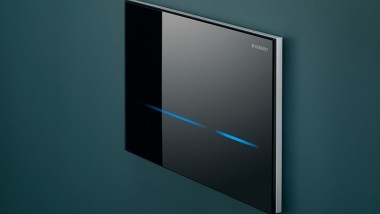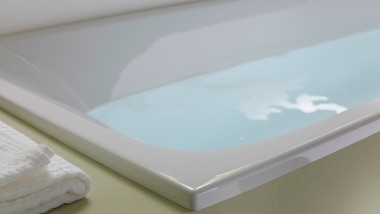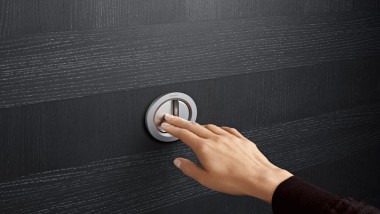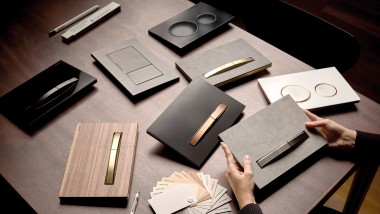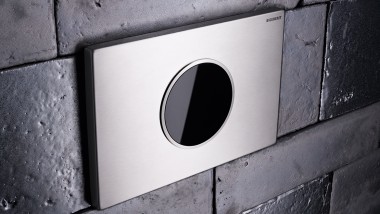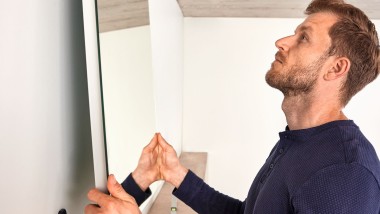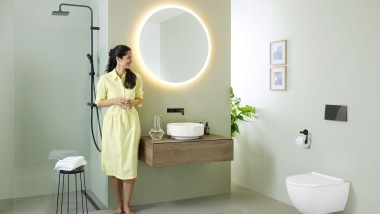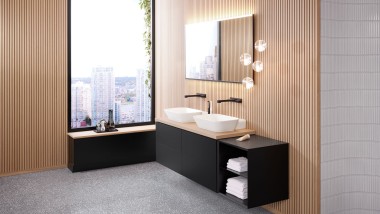Good bathroom lighting Planning the perfect lighting in the bathroom
The bathroom is the first port of call in the morning and the last in the evening before going to bed. A bathroom with a homely atmosphere is the best way of getting the day off to a positive start and bringing it to a relaxing conclusion. Harmonious bathroom lighting plays an essential role here. Our guide can help you to find the right lighting for your bathroom.
Lighting explained – what do kelvin, Ra, lumen and lux mean?
Lighting is an important part of interior design and can have a significant impact on the atmosphere and mood of a room. Colour temperature, colour rendering, brightness and illuminance all play an important role here.
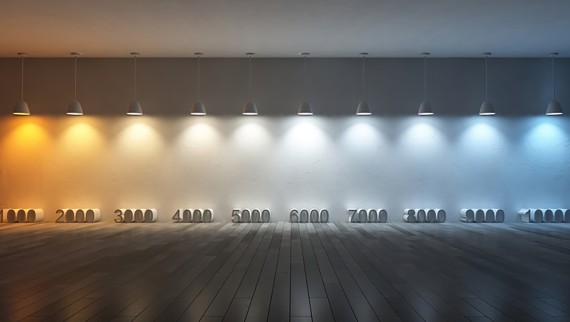
Color temperature (kelvin) – how warm or cool the light is
The color temperature defines how the color of light is perceived. It specifies how warm or cool the light appears and is measured in kelvins (K). The higher the kelvin value, the cooler the light appears (bluish). Meanwhile, lower kelvin values are perceived as a warmer light (yellowish). For example, conventional light bulbs have a color temperature of around 2,700 K, which makes them appear warmer and with a yellowish tone. In contrast, daylight has a color temperature of between 5,000 and 6,500 K and appears cooler with a bluish tone.
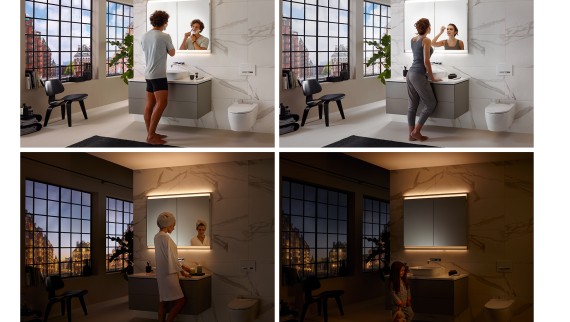
In general, a differentiation is made between different categories of white light:
- Warm white has a color temperature of below 3300 K and generates warm lighting. It is often used in living areas, such as bedrooms, living rooms, or corridors.
- Neutral white or universal white has a color temperature of between 3300 and 5300 K and generates a pleasantly bright light used in working areas, such as offices, schools, and libraries.
- Cool white or daylight white has a color temperature of over 5300 K and generates a cool, bluish light that is often used in operating theatres, laboratories, industrial facilities, and other places where increased concentration and attention are required.
Color rendering (Ra value)
Color rendering relates to how naturally the colors of objects appear under certain lighting conditions. In the bathroom, this is particularly important when looking in the mirror in order to show natural skin and hair tones and the color of clothing or make-up.
This is represented by the Ra value, also known as the CRI (Color Rendering Index). On a scale of 0 to 100, it specifies how accurately a light source renders the colors of objects in comparison with natural daylight. The higher the value, the closer the rendered colors are to the original. A Ra value of 100 corresponds to color rendering as achieved by natural daylight. At lower Ra values, colors look distorted or altered. Overall, a high color rendering helps to create a natural, pleasant atmosphere in rooms.
Our tip: Values of 80 Ra and above are a good reference point for interiors. In the bathroom, a value above 90 Ra is recommended for the natural rendering of skin tones.
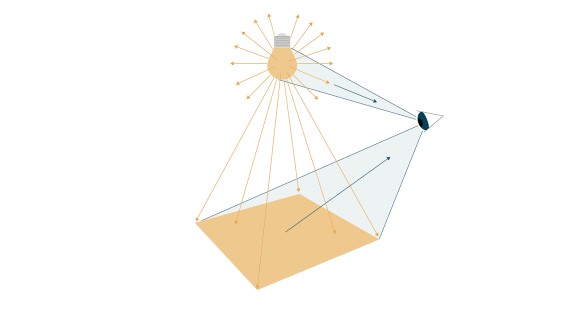
Brightness (lumen)
The lumen (lm) value indicates how bright a light source is. The higher the lumen value, the brighter the light.
Illuminance (lux)
Illuminance defines how much light falls on a certain surface at a certain distance from the light source, and is measured in lux (lx). The higher the lux value, the brighter and more intense the lighting on the respective surface. The lux value is important in ensuring that the lighting in a room is sufficiently bright and kind to the eyes.
Our tip: Illuminance and brightness are strongly influenced by the surrounding walls, their texture and colour. Wherever possible, always look at a lighting solution in a realistic context with a suitable bathroom size, wall colours and materials.
Tip 1: Mixture of direct and indirect lighting
Interior designers try to strike a good balance between direct and indirect lighting in the bathroom.
- Direct lighting: Lamps with a focused light beam generate direct lighting. This promotes the formation of shadows and results in a natural vividness (if coming from above). However, direct lighting also generates high contrasts and unfavorable shadows in some cases.
- Diffuse lighting: Diffuse lighting occurs when a light beam is filtered or scattered by a screen or shade.
- Indirect lighting: In indirect lighting, the light source is reflected by an object or wall. Both diffuse and indirect lighting distribute the light more evenly, but provide only dull lighting when used on their own.
Tip 2: Combine between five and seven light sources
A combination of several light sources is recommended for creating balanced lighting for different activities. How many depends on the size of the room, the type and intensity of the desired lighting, and individual requirements.
The Swedish interior designer Frida Ramstedt coined the “5 to 7 rule” in connection with lighting. She believes that every room should have between five and seven light sources. Some people even recommend up to nine sources. Another of her tips is to use light from different categories.
In the bathroom, a combination of the following lighting types is recommended:
- Main light: Distributes light around the entire room, for example ceiling lights, a bathroom mirror with lighting, or mirror cabinet with lighting.
- Furniture light: Emphasizes interesting elements and creates a sense of atmosphere, for example lighting of open furniture areas or lighting underneath furniture.
- Atmospheric light: Used mainly for decorative purposes, for example spotlights directed on an object, fairy lights, or candles.
- Equipment light: Sanitary products with integrated light sources that offer additional functions, for example actuator plates with orientation light that is activated as soon as someone approaches the toilet.
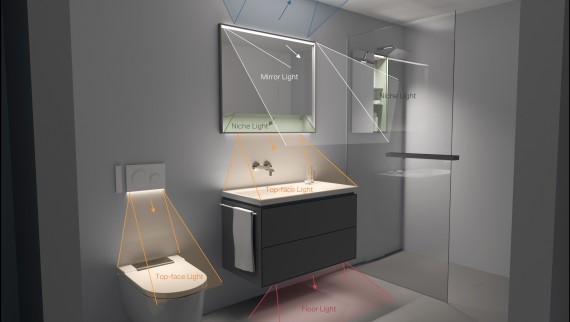
Additional light sources used in bathroom design:
- Lighting of the furniture interior, for example drawer light
- Illuminated magnifying mirror
- Indication lights that show the device status
In the bathroom shown, the room and mirror image are lit optimally thanks to the combination of direct and indirect light sources. The mirror cabinet with lighting is used as the main bathroom light. A bathroom mirror with lighting is also possible. Niche lights in the mirror cabinet and shower elegantly illuminate the used spaces. Lighting underneath the toilet and bathroom furniture are an architectural highlight and also contribute to the atmosphere.
